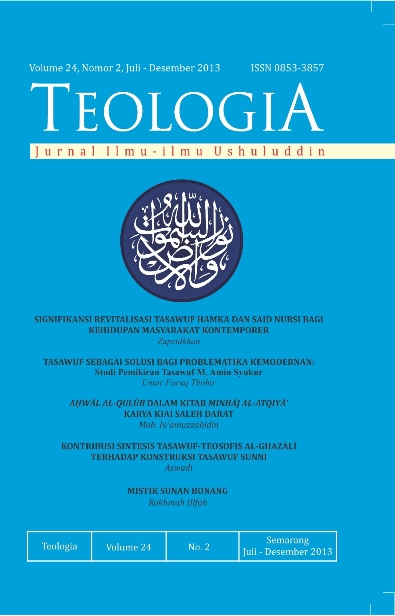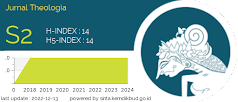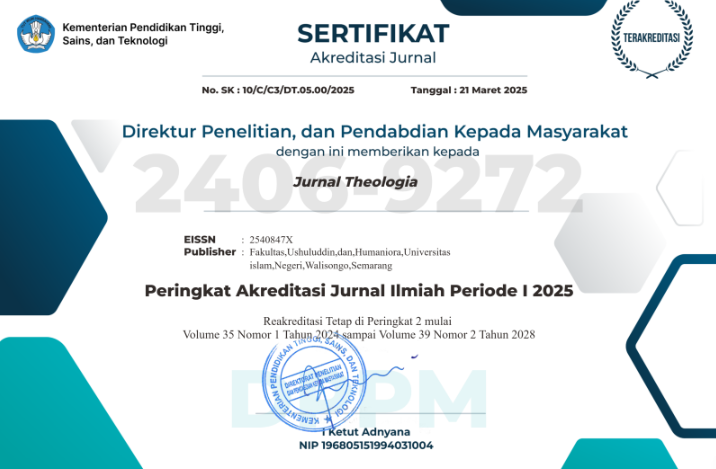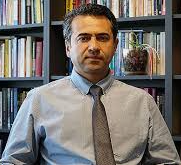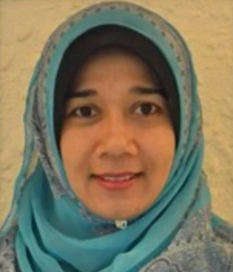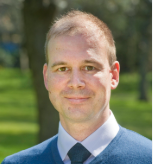GERAKAN PEMBARUAN TASAWUF DI INDONESIA
DOI:
https://doi.org/10.21580/teo.2013.24.2.335Abstract
Abstract: This article aims to elaborate on Sufism reform movement in Indonesia. There former of Islam in Indonesia realize that Sufism is an integral part of Islam, therefore they are not hostile to Sufism, but tends to purify the Sufism of deviant practices. Irregularities which they saw in the midst of the Muslim community but claimed as part of Sufism must be cleaned. Sufism must be free of elements of heresy or shirk that could tarnish the purity of Islam. In this article, the author presents the figure of Hamka as a representation of Sufism reform movement in Indonesia. Although Hamka very appreciative, even followers of Sufism, he was never affiliated to the sufi order schools anywhere in the world.He also never made a separate congregation flow, as was common in the realm of the sufi order. Abstrak: Artikel ini bertujuan untuk mengelaborasi gerakan pembaruan tasawuf di Indonesia. Para pembaru Islam di Indonesia menyadari bahwa tasawuf merupakan bagian integral dalam Islam, karena itu mereka tidak memusuhi tasawuf, tetapi cenderung untuk memurnikan tasawuf dari praktik-praktik yang menyimpang. Penyimpangan yang mereka lihat di tengah-tengah masyarakat Muslim tetapi diklaim sebagai bagian dari ajaran tasawuf haruslah dibersihkan. Tasawuf harus terbebas dari unsur-unsur bid’ah atau syirik yang dapat menodai kemurnian ajaran Islam. Dalam artikel ini, penulis menyajikan sosok Hamka sebagai representasi dari gerakan pembaruan tasawuf di Indonesia. Sekalipun Hamka sangat apresiatif, bahkan pengamal tasawuf, ia tidak pernah berafiliasi ke aliran tarekat mana pun di dunia ini. Ia juga tidak pernah membuat aliran tarekat tersendiri, sebagaimana lazimnya dalam dunia tarekat. Keywords: neo-sufisme, bid’ah, al-Quran, al-Sunnah, tarekat.Downloads
References
Aceh, Abu Bakar, Pengantar Sejarah Sufi dan Tasawwuf, Solo: Ramadhani, 1993.
Ahmad, Abdul-FattahSayyid,Tasawuf antara Al-Ghazali dan Ibnu Taimiyah, penerj. Muhammad Muchson Anasy, Jakarta: Khalifa, 2005.
Arberry, A.J., Sufism: An Account of the Mystics of Islam, London: George Allen and Unwin Ltd, 1950.
Azra, Azyumardi, Historiografi Islam Kontemporer: Wacana, Aktualitas dan Aktor Sejarah, Jakarta: Gramedia, 2002.
Azra, Azyumardi, Jaringan Ulama Timur Tengah dan Kepulauan Nusantara Abad XVII dan XVIII: Melacak Akar-akar Pembaruan Pemikiran Islam di Indonesia, Bandung: Mizan, 1994.
Azra, Azyumardi, Renaisans Islam Asia Tenggara: Sejarah Wacana & Kekuasaan, Bandung: Remaja Rosdakarya, 1999.
Baghdādī, Jamāl al-DīnAbū al-Faraj `Abd al-Raḥmān ibn Jawzī, Talbīs Iblīs, Kairo: Idārat al-Ṭibā`at al-Munīrīyah, 1368 H.
Dewan Redaksi Ensiklopedi Islam, Ensiklopedi Islam, Vol. IV, Jakarta: PT. Ichtiar Baru van Hoeve, 2002.
Fathurahman, Oman,dan Jajat Burhanuddin, “Tradisi dan Wacana Intelektual Islam Indonesia”, artikel diakses dari http://naskahkuno.blogspot.com/2007/07/neo-sufisme-ghazalian-abdussamad-al.html.
Hamka, Mengembalikan Tasawuf Ke Pangkalnya, Jakarta: Pustaka Panjimas, 1973, h. 40-41.
Hamka, Pelajaran Agama Islam, Jakarta: Bulan Bintang, 1992.
Hamka, Prinsip dan Kebijaksanaan Da'wah Islam, Jakarta: UMMINDA, 1982.
Hamka, Said Jamaluddin Al-Afghani: Pelopor Kebangkitan Muslimin, Jakarta: Bulan Bintang, 1981.
Hodgson, Marshal G.,The Venture of Islam, Vol. III, Chicago: Chicago Univesiry Press, 1974.
Johns, A. H., “Sufism as a Category in Indonesia Literature and History”, JSEAH, 2, II,1961.
Madjid, Nurcholish, Islam Agama Peradaban: Membangun Makna dan Relevansi Doktrin Islam Dalam Sejarah, Jakarta: Paramadina, 1995.
Madjid, Nurcholish, Islam Agama Peradaban: Membangun Makna dan Relevansi Doktrin Islam Dalam Sejarah, Jakarta: Paramadina, 1995.
Makdisi, George, “Ibn Taimiya: a Sufi of the Qādiriya Order”, American Journal of ArabiStudies, AJAS 1 1974.
Makdisi, George, Religion, Law and Learning in Classical Islam, Hampshire and Vermont: Variorum, 1991.
Masyharuddin, PemberontakanTasawuf: Kritik Ibn Taimiyah atas Rancang Bangun Tasawuf, Surabaya: JP Books-STAIN Press Kudus, 2007.
Meier, Fritz, “Des saubersteuber die vorbesstimmung. Ein Stuck Ibn Taymiyyah”, Saeculum 32 1981, h. 74-89.
Nasution, Harun, Pembaharuan Dalam Islam: Sejarah Pemikiran dan Gerakan, Jakarta: Bulan Bintang, 1992.
Rahardjo, M. Dawam, Intelektual, Intelegensia dan Perilaku Politik Bangsa: Risalah Cendekiawan Muslim, Bandung: Mizan, 1993.
Rahman, Fazlur, "Revival and Reform", dalam P. M. Holt et.al, The Cambridge History of Islam, Vol. II, 1970.
Rahman, Fazlur, Islam, edisi II, Chicago: University of Chicago Press, 1979.
Ramadhan, Sa’id, Al-Rūhanīyat Al-Ijtimā’`īyahfī Al-Islām,Damaskus: tp, 1965.
Sa’ād, Al-Ṭablawī Maḥmūd, al-Taṣawwuffī Turāṡ Ibn Taimiyah, Kairo: T.p., 1984.
Shihab, Alwi, Membendung Arus: Respons Gerakan Muhammadiyah Terhadap Penetrasi Misi Kristen di Indonesia, Bandung: Mizan, 1998.
Sirriyeh, Elizabeth,Sufis and Anti-Sufis: The Defense, Rethinking and Rejection of Sufism in the Modern World, Richmond, Surrey: Curzon Press, 1999.
Syukur, Amin, Zuhud di Abad Modern, Yogyakarta: Pustaka Pelajar, 1997.
Wahid, Abdurrahman, “Benarkah Buya Hamka seorang Besar?”, dalam Nasir Tamara, Buntaran Sanusi dan Vincent Djauhari (peny.), Hamka di mataUmat, Jakarta: Sinar Harapan, 1983.

